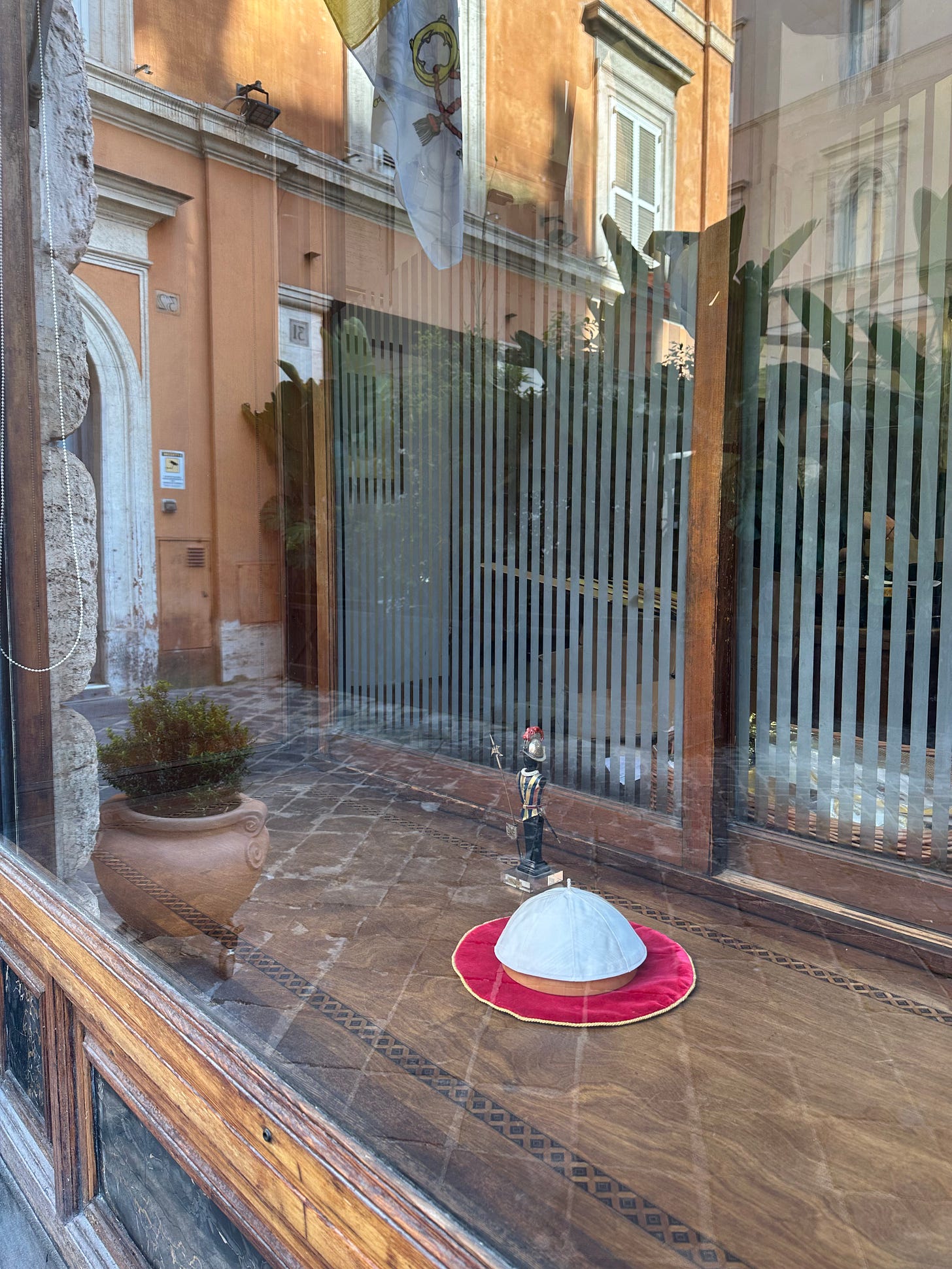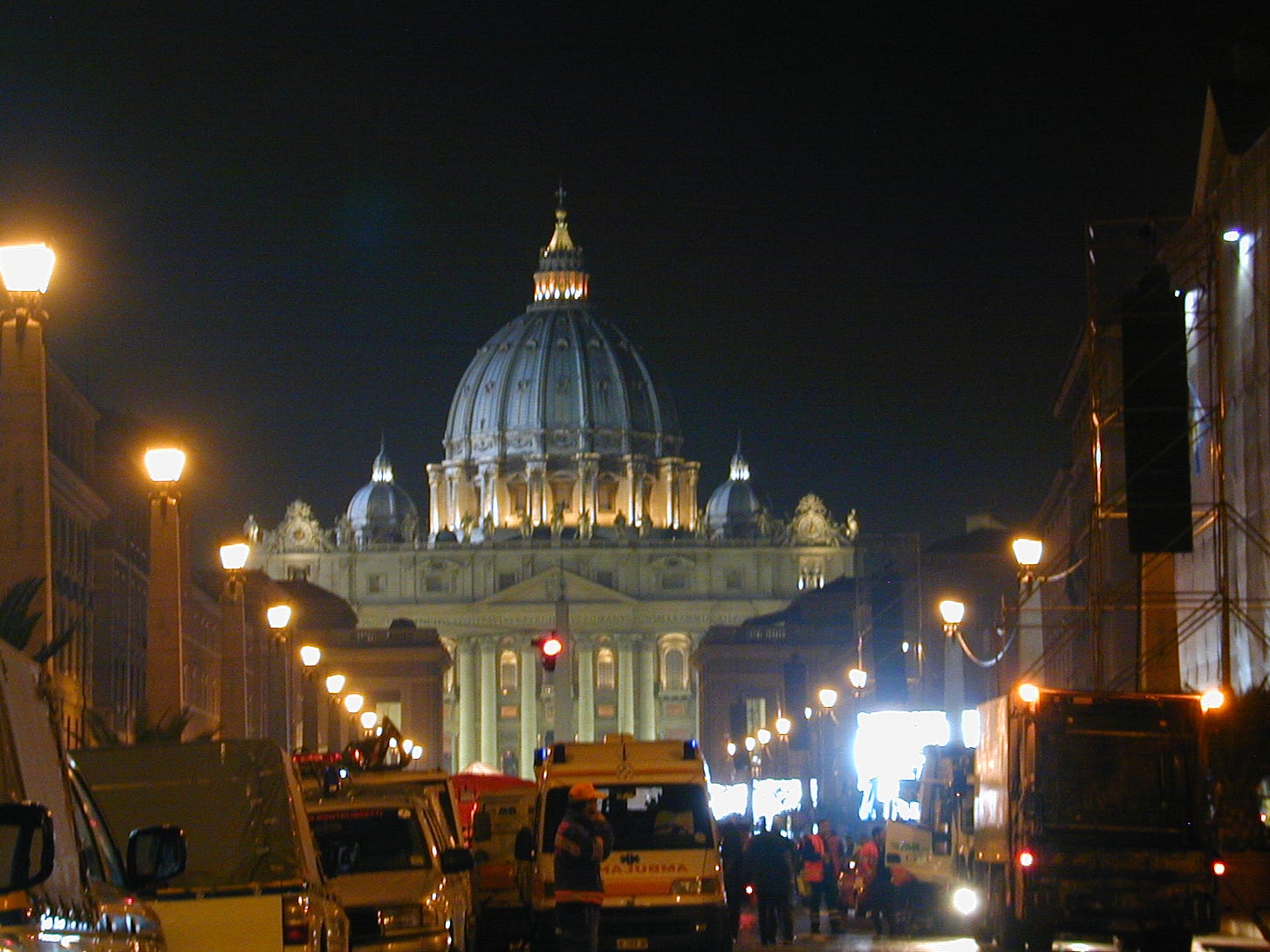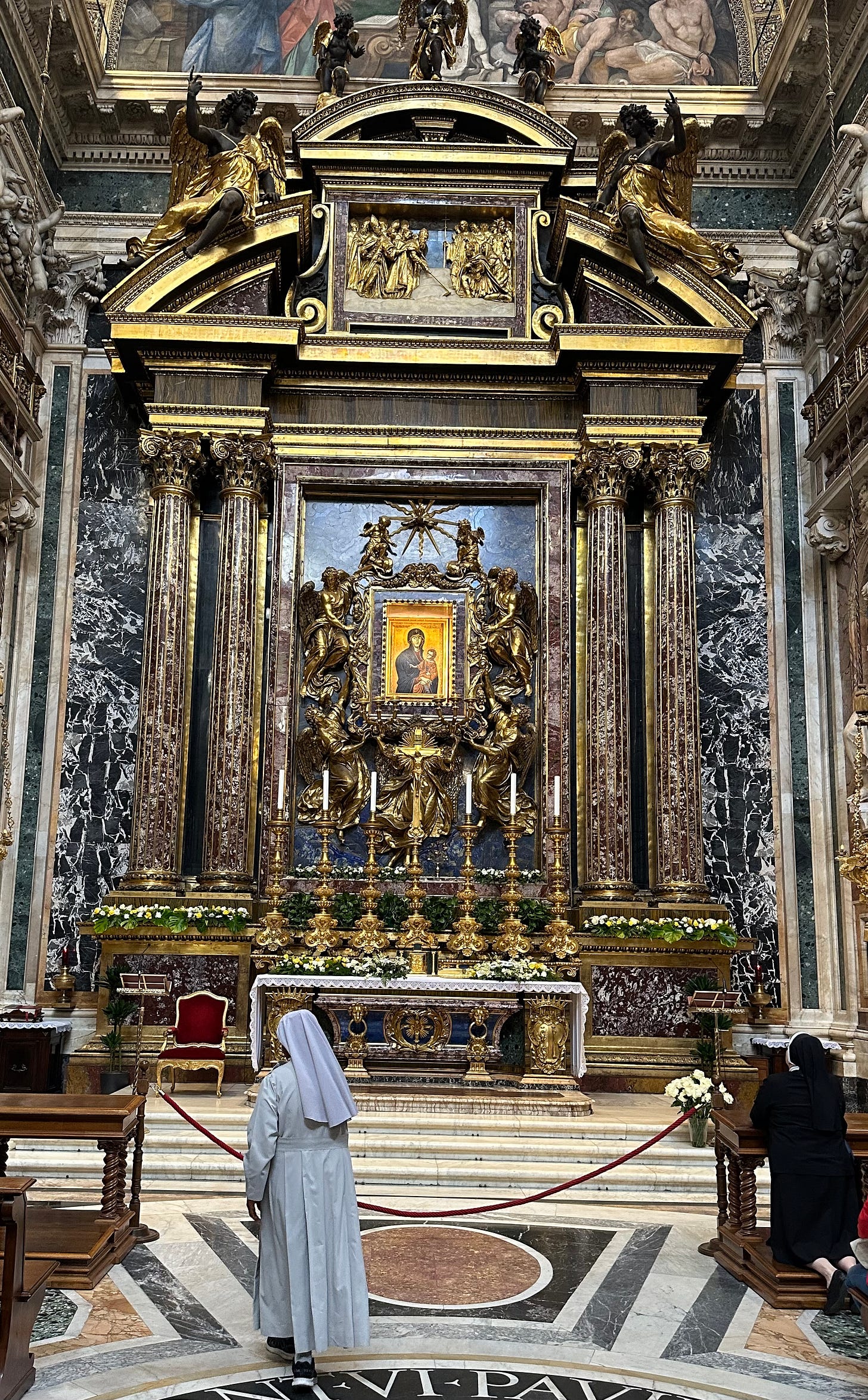The Italian idiomatic equivalent to “once in a blue moon”, ogni morte di papa, has the literal meaning “every time a Pope dies”. Two weeks ago today, on both Easter Monday and Rome’s birthday, Pope Francis died. It is only the second time an incumbent pope has died in the twenty-five years I’ve lived in Rome. The first was John Paul II twenty years ago last month, and recent events returned it to mind and perhaps inevitably provoked comparison.

John Paul’s reign had been almost unprecedentedly long: after St Peter (whose precise dates are a little hazy) and Leo XIII, his reign between 1978 and 2005 makes him the third longest serving pope in the history of the Roman Catholic Church. His time on the Apostolic Throne was not only long but also spanned an extraordinary moment in history—the dissolution of the Soviet Union; the crumbling of the Eastern Bloc—and he was the first pope to travel widely. Within a day of the syncopated ringing of the bells of nigh on a thousand churches across Rome announcing his death, the city’s notorious traffic was further swelled with a veritable panoply of Polish number plates: many of his compatriots had simply hopped in their cars and driven the length of Europe to pay their respects to Karol Wojtyla, the first non-Italian pope in almost half a millennium.
As John Paul II’s body lay in state at St Peter’s Basilica, queues snaked through the Borgo, one of the lines began over the river. People waited patiently under an unseasonably fierce early April sun for up to twenty hours, and there was a certain disapproval when the queue was blocked to allow the then President of the US, George W Bush, to pay his respects. Any photographs were taken with cameras, and there was no social media. It was a very different world.

On the day of that funeral there was restricted movement of traffic within the Grande Raccordo Anulare, the motorway which encircles the city—as Fellini said, like one of the rings of Saturn—which became a coach park for some of perhaps a million pilgrims. Almost everyone in Rome had the day off. It was, I suppose, the largest event since the 9/11 attacks, the single largest gathering of heads of state ever to have happened thus far, and the Italian authorities were justifiably cautious.
I recall the evening before that funeral; I rode my small yellow 50cc Piaggio scooter past the Castel Sant’Angelo and through the underpass onto the Lungotevere, the embankment along the Tiber, as the police closed the road behind me. I remember thinking at the time it was an uncanny experience rather like the opening scenes of Nanni Moretti’s 1992 film Caro Diario, as he rides his Vespa through the torporous, deserted streets of a fin de siècle Roman August. Twenty years on, the recollection of those empty streets brings back memories of lockdown coloured with shuddering incredulity—did that really all happen?—instead. A lot has gone on in the interim, after all.
Pope Francis was (is) very popular for his quietly intelligent humanity and humble approachability, and crowds flocked to Rome for him too. On the first day his body lay in state at St Peter’s—in an open coffin rather than atop a catafalque, and considerably less exposed than is usual—the church remained open for most of the night to accommodate mourners. However, it felt like some sort of bellwether for the state of the Roman Church that when I passed at ten o’clock on the morning of the second day the wait was barely an hour and entirely within the colonnade. The queues swelled once again but the difference from twenty years ago was notable.
On Saturday 26 April the papal funeral took place in Piazza San Pietro and once again world leaders gathered to pay their respects to the Supreme Pontiff, with varying degrees of gravitas. Pope Francis had specified that he wished to be buried in Santa Maria Maggiore, close to the icon of the Salus Populi Romani to which he was especially devoted. This was an unusual choice, the first time a pope has been buried outside the walls of the Vatican since Pius IX who died in 1878. Pius had, he said, become “a prisoner of the Vatican” with the fall of the papal government of the city in 1870, he only left the walls after his death and was buried across the city at San Lorenzo fuori le Mura.

Thus it was that on the Saturday after Easter an event considerably rarer than ogni morte di papa took place. After the funeral the procession led the coffin of Pope Francis in the popemobile (a name the Vatican has given up eschewing; it’s called the papacinetum in Latin) along a variant of the medieval via papalis. This was the medieval route followed by newly crowned popes as they rode on horseback from St Peter’s in the Vatican to the Cathedral of Rome, St John Lateran. The hooves of centuries of processions past echoed as the twenty-first century cortège of electric vehicles crossed Rome on a bright spring day. They glided past the Colosseum before turning away from San Giovanni at the junction of via Labicana and via Merulana, instead taking a left to Santa Maria Maggiore for one last salutation of the Salus Populi Romani.
Rome is a city with swagger, and Romans are by an nature insouciant bunch, but that was all put aside and there has been a definite, palpable, sadness in Rome among folk—of all creeds and of none—for the death of the city’s bishop and a much-loved man. The streets of Pope Francis’ final procession were lined with tourists, pilgrims, and Romans alike and it really was very moving indeed.
Saluti da Roma, Agnes







Yes. I shall miss him.
Beautifully written chronicle…GRAZIE!!